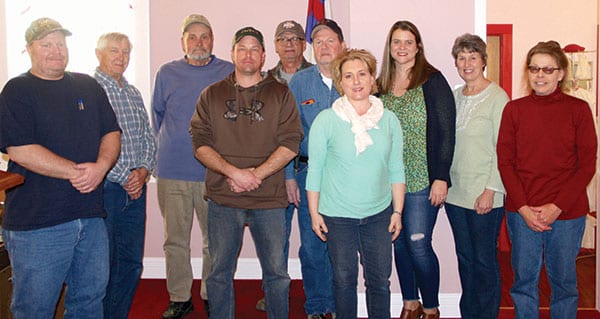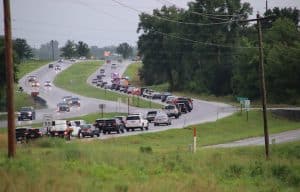Coalition wants stronger wind ordinance

A new coalition is working to bring a wind of change to Monroe County, specifically regarding the county’s wind energy conversion systems ordinance.
The Monroe County Fair Wind Coalition was organized by a working group of 11 county residents following the Aug. 20, 2018 meeting of the Monroe County Board.
At that meeting, local developer Joe Koppeis spoke about his proposed wind farm near the bluffs south of Valmeyer.
“Since almost everyone in this room was courageous, determined, professional and patriotic enough to stand up and make comment (at the meeting), we decided to meet independently to see if we could do some professional, legal, ethical and organized pushback, not so much on Mr. Koppeis’ initiative – he’s a businessman. He’s in the business to make money – but we found great concern on the current Monroe County WECS ordinance,” coalition member Carl Daubach said.
Other coalition members include Rich Harsey, Merrill Prange, Alex Knoll, Mike Kaestner, Paul Minton, Kelly Brandt, Courtney Schweickhardt, Peggy Voelker and Pen Daubach.
These citizens come from across the county, with Waterloo, Fults, Maeystown and Valmeyer being represented. They also come from diverse walks of life, working in fields as varied as power generation, automotive repair, local government, law enforcement and the military.
“Our thrust is not so much to encourage Koppeis to go away, but that the county re-look at its ordinance, strengthen it and, should Koppeis not be the end of these kinds of applications, at least the county is in a better position for future wind factory developments in the county,” Carl Daubach explained.
The coalition’s concerns about the proposed project are numerous, but they broadly fall into the five categories of public safety, public health, property values, environmental impacts and engineering impacts.
On that first topic, two of the coalition’s main concerns is that the setback distance from a wind turbine to a property line is too short and that they pose a fire hazard.
The county’s ordinance requires there to be a setback distance 1.25 times the wind turbine’s height between it and a principal structure or neighboring property line.
The coalition argues that is not enough, given that several other municipalities have longer setback distances.
In the public health realm, concerns center on shadow flicker, noise disturbance and groundwater contamination.
“Whenever you are violating someone’s rights, you’re looking at litigation (against the county),” Schweickhardt warned.
For their third area of reservation, the coalition cited a study in Tipton County, Ind., which has wind turbines of a smaller size than the ones proposed here and with a larger setback distance.
According to the coalition, that study found that property within a half mile of a wind turbine decreased in value as much as 80 percent. Additionally, the coalition said property as far as three miles away saw a 25 percent decrease in value.
“So the big question is whose responsible for that?” asked Knoll. “And what kind of liability does that raise for the county?”
As it relates to environmental impacts, the coalition pointed to the results of the Illinois Department of Natural Resources report on the topic.
“Karst presents its own series of difficulties,” Pen Daubach said, referring to the rock that makes up much of the area in the vicinity of the proposed wind farm. “But it also is going to cause tremendous damage to birds and bats, even more so. Our ordinance doesn’t really address these issues in an explicit manner.”
Finally, the coalition says there are engineering challenges associated with a project of this magnitude.
“There’s going to have to be a lot of modifications to our infrastructure in terms of roads, drainage and bridges,” Harsey said. “This is touched on in our ordinance, but I don’t believe it to be specific enough.”
The coalition expressed other issues with the project, such as it not creating local jobs and dividing the community.
“The issue before us is ‘Who’s getting screwed?” Carl Daubach summarized. “Property values and safety of my grandchildren I take personally. It’s really a bigger issue.”
So far, the coalition has more than 1,000 people on record as opposed to the proposed project through an electronic outreach campaign.
Going forward, the coalition plans to approach the county about amending its ordinance.
“Wind factories belong in industrial zones, period,” Carl Daubach said. “Not ag, not conservation, not residential. Factory systems belong in industrially demarcated land.”
To learn more about this coalition, visit monroecountyilfairwindcoalition.org.






